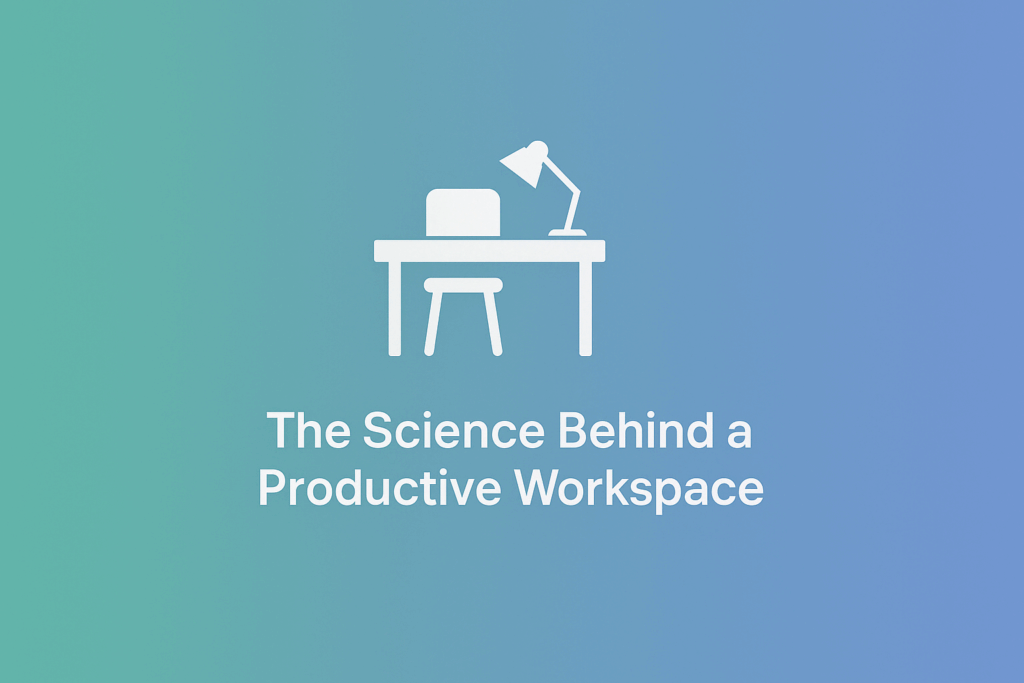A workspace shapes productivity in ways that are often overlooked. The environment influences focus, creativity, and efficiency more than most realize.
Understanding this connection for business owners, freelancers, or remote workers unlocks the potential for better output and satisfaction. Physical surroundings, from lighting to layout, play a critical role in how work gets done.
This guide dives deep into the evidence and practical steps to optimize any workspace for peak performance.
How the Environment Shapes Behaviour
The environment actively molds how people think and act. Psychologists refer to this as the “environmental cue effect.” A cluttered desk signals chaos to the brain, triggering stress.
Open, airy spaces, on the other hand, encourage calm and clarity.
Noise also plays a role. A study found that constant background chatter slashes concentration by 40%. Compare that to controlled soundscapes, which enhance task performance.
Key Elements of a Productive Workspace
Creating a space that fuels productivity hinges on a few core factors. Each one ties back to science and practical outcomes. Here’s what matters most.
Contents
Lighting
Lighting changes everything. Harsh fluorescent bulbs strain eyes and sap energy. Natural light, though, boosts mood and alertness.
A study found that workers near windows slept better and performed cognitive tasks 15% faster. The reason? Daylight regulates circadian rhythms, keeping the body in sync with its natural rhythms.
For artificial options, aim for warm, adjustable lights. Blue-heavy screens or bulbs mimic daylight but disrupt sleep if used late. Balance matters—too dim, and lethargy creeps in; too bright, and tension rises.
Position lights to avoid glare on screens, a common productivity killer. A well-lit workspace keeps eyes fresh and minds sharp.
Ergonomics
Posture affects output more than most admit. Slouching over a laptop for hours can slow blood flow and impair cognitive function. Ergonomics fixes that. Chairs with lumbar support, desks at elbow height, and eye-level screens cut physical strain by 25%.
A study found that workers who used them reported 32% less discomfort and higher focus. Minor tweaks can turn a chair into a productivity engine.
Layout
The arrangement of a room dictates the workflow. Open layouts foster collaboration but can overwhelm introverts. Private nooks are ideal for deep focus but may isolate teams. The trick lies in balance.
Clutter kills efficiency. A study found that messy desks can reduce attention spans by 10%. Keep surfaces clear, with tools in reach but not in the way. Traffic flow counts, too. A layout that breathes supports both solo grinds and group sparks.
Temperature
Heat or cold can derail work fast. A study found that error rates increase by 44% when the temperature is below 68°F. Too warm and lethargy sets in. Thermostats aren’t just for comfort; they’re for output.
Air quality is essential here. Stale, stuffy rooms dull thinking. Research shows that ventilation with fresh air cuts sick days and sharpens focus. Plants also help filter toxins and add oxygen. A workspace that feels alive keeps workers alert.
Colour and Aesthetics
Colours aren’t just decor—they steer emotions. Blue calms and aids concentration, making it ideal for analytical tasks. Green reduces eye strain and sparks creativity. Red energizes but can stress if overdone. A study found neutral tones with pops of color lift morale without distraction.
Aesthetics extend beyond paint. Art or photos personalize a space, boosting ownership and comfort. It is too sterile, and it feels like a hospital; it is too busy, and it’s a circus.
The Role of Noise in a Productive Workspace
Sound shapes focus more than most realize. Dead silence unnerves some, while chatter derails others. The sweet spot varies depending on the task and the individual. A study found that low-level ambient noise boosts creative problem-solving by 35%.
Soundproofing tames echoes in shared spaces. Coworking spaces in North York often employ acoustic design to strike a balance between energy and calm, demonstrating that noise management is a science.
Why Shared Workspaces Amplify Productivity
Shared environments, like coworking spaces, blend science and community. They offer ergonomic furniture, natural light, and carefully curated noise levels. A report found that 74% of coworking users feel more productive than in traditional offices. Why? Variety and structure.
Networking happens naturally, sparking ideas. Quiet zones and meeting rooms cater to every task. Coworking spaces provide turnkey solutions for freelancers or small teams—plug in and work, no guesswork. The design does the heavy lifting, leaving focus on the job.
Practical Steps to Optimize Your Workspace
Ready to act? Start with these moves.
Assess the current setup. Check lighting—too dim? Add lamps. Test noise—too loud? Grab headphones. Measure comfort—aching back? Adjust the chair. Minor fixes yield big gains.
Prioritize natural elements. Open blinds, add a plant, or crack a window. Studies show that greenery reduces stress by 13%, and fresh air clears the mind.
Declutter ruthlessly. File papers, hide cables, ditch junk. A clean desk saves mental bandwidth.
Experiment with colour. Paint an accent wall a blue or green color. Swap out gray for warmth. Test what clicks.
Upgrade tools, swap that creaky chair for ergonomic support, and boost Wi-Fi speed. Tech should lift, not drag.
Test and tweak. Try standing for an hour. Shift desk angles. Productivity rises with iteration.
Common Myths About Workspace Design
- Myth: Open plans always win. Truth: They suit collaboration, not focus. Balance beats one-size-fits-all.
- Myth: More tech equals more output. Truth: Glitches offset gains. Reliability trumps gadgets.
- Myth: Aesthetics don’t matter. Truth: Visuals sway mood and effort. Bland spaces bore.
- Myth: Noise is just noise. Truth: Type and level shift results. Control it.
- Myth: One setup fits all. Truth: Tasks and people vary—flexibility rules.
Conclusion
Lighting, layout, sound, and comfort converge to shape how work happens. Evidence proves it: tweak the surroundings, and output climbs. This is a key advantage for business owners and solo entrepreneurs.
Coworking spaces show how it’s done, blending design with function. Assess, adjust, and thrive. The space around you isn’t just walls. It’s the foundation of what you build.
Frequently Asked Questions
What makes a workspace productive?
Good lighting, ergonomic furniture, a balanced noise level, and a well-organized layout characterize a productive workspace. Natural light and comfort boost energy, while
clutter-free zones sharpen focus. Tailor it to the task – collaboration needs open areas, while deep work needs quiet.
How does lighting affect productivity?
Lighting sets the tone. Natural light boosts alertness and mood, cutting fatigue. Harsh or dim artificial lights strain eyes and slow work. Adjustable, warm lighting hits the sweet spot, keeping minds clear and pace steady.
Why is ergonomics important in a workspace?
Ergonomics prevents strain and boosts efficiency. Proper chairs, desk height, and screen placement cut discomfort by 25%. Less pain means longer focus and fewer breaks. It’s about working smarter, not harder.
Can noise improve productivity?
Yes, but it depends. Low-level ambient noise lifts creativity, while loud or erratic sounds kill concentration. For optimal results, control it with headphones or use soundproofing.
How do coworking spaces enhance productivity?
Coworking spaces offer ready-made setups, including ergonomic desks, high-speed Wi-Fi, and flexible workspaces. Community sparks ideas, while variety fights monotony. For many, it’s a productivity shortcut without the setup hassle.





